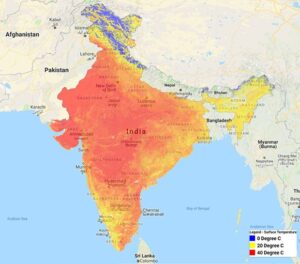TRENDING
EY Pune Tragedy: 26-Year-Old Employee Dies from Work Stress, Company MIA at Funeral

EY Pune Tragedy: 26-Year-Old Employee Dies from Work Stress, Company MIA at Funeral
In a heartbreaking incident that has sparked outrage and concern, a 26-year-old employee at EY Pune tragically passed away due to work-related stress. The young woman’s death has not only shocked her colleagues and family but also raised serious questions about workplace wellbeing and company responsibility.
The Tragic Incident
The employee, whose identity has been withheld for privacy reasons, was a dedicated worker at EY Pune. Known for her commitment and professionalism, she was part of the firm’s high-pressure environment. Over time, the demands of her role began to take a severe toll on her mental and physical health.
Despite numerous signs of stress and exhaustion, including frequent absenteeism and a noticeable decline in her health, her concerns appeared to be overlooked. Colleagues and friends have reported that she often spoke about the immense pressure she was under and the lack of adequate support from her supervisors.
The Fallout
Her untimely death has left a profound impact on her family and friends. The situation was further exacerbated by the company’s absence from her funeral. Reports indicate that no representatives from EY Pune attended the funeral, an omission that has been met with widespread criticism.

EY Pune Tragedy
Many have questioned the company’s commitment to employee welfare and corporate responsibility. The lack of acknowledgement or support for the grieving family has ignited a debate about the human side of corporate culture and the responsibilities that come with it.
The Importance of Workplace Wellbeing
This tragic event underscores a critical issue in many high-pressure work environments: the mental and emotional wellbeing of employees. As companies strive for productivity and success, the human cost can sometimes be overlooked. The case of the EY Pune employee highlights the need for companies to prioritize mental health and provide adequate support systems for their staff.
Workplaces should have measures to identify and address signs of stress and burnout early on.This includes regular check-ins with employees, mental health resources, and a supportive environment that encourages open communication about wellbeing. When companies fail to support their employees adequately, it can lead to severe consequences, as seen in this unfortunate case.
The Role of Companies in Supporting Employees
Like many other firms, EY Pune has a responsibility to ensure the health and safety of its employees.This involves creating a supportive work environment where employees feel valued and heard. In the wake of this incident, EY Pune must address the concerns raised by this tragedy.
The company should take proactive steps to review and improve its workplace policies.This could include implementing better support systems, enhancing mental health resources, and fostering a more compassionate and responsive work culture. Additionally, acknowledging the loss and providing support to the bereaved family would be a significant step towards mending the trust that has been damaged.
Moving Forward
The death of the 26-year-old employee at EY Pune is a tragic reminder of the importance of mental health in the workplace. It calls for reevaluating how companies approach employee wellbeing and the measures they have in place to support their staff.
In light of this incident, EY Pune and other organizations need to learn from this tragedy and make meaningful changes. By prioritizing mental health and fostering a supportive work environment, companies can prevent similar tragedies in the future and ensure that employees are valued not just for theirproductivity, but as individuals with their own needs and struggles.
As the community grieves, the hope is that this tragic event will lead to positive changes in how companies approach employee wellbeing and corporate responsibility.
AUTO
Hyundai Motors India IPO: Set to Launch After Dussehra, Poised to Be India’s Biggest IPO

Hyundai Motors India Limited (HMIL) is gearing up for one of the most awaited initial public offerings (IPOs) in the Indian market. Recent reports suggest that the Hyundai Motors India IPO could open for public subscription soon after the Hindu festival of Dussehra. Investors and market watchers are eager for the official announcement, as this IPO could mark a major event in India’s auto sector.
IPO to Open on October 14
According to reports from leading financial news outlets, the IPO is expected to open for subscription on October 14, 2024. The price band, which will give investors an idea of the share price range, is likely to be announced by mid-next week. Meanwhile, there is already a buzz in the grey market, indicating strong demand for Hyundai Motors India’s IPO even before the official launch.
Regulatory Approval and Grey Market Premium
Hyundai Motors India Limited has recently secured approval from the Securities and Exchange Board of India (SEBI), a necessary regulatory step before an IPO can proceed. This approval has paved the way for the company to finalize its plans for launching the IPO.
Reports from Investorgain.com show that shares of Hyundai Motors India have already started gaining traction in the grey market, with a premium of ₹350. This suggests high investor confidence in the IPO and expectations of strong market performance post-listing.
Hyundai Motors India: A Brief Overview
Hyundai Motors India is the Indian subsidiary of South Korea’s automotive giant, Hyundai Motor Company. It started operations in India in 1996, and over the years, it has become one of the key players in the country’s automotive market. Currently, the company offers 13 models across various segments, ranging from small cars to SUVs. Hyundai Motors India has established itself as a strong competitor to Maruti Suzuki, Japan’s leading automaker in India.

Hyundai Motors
Interestingly, this IPO marks the first time in two decades that a major automotive manufacturer has launched an IPO in India. The last automotive IPO of such magnitude was from Maruti Suzuki, which was listed in 2003. Since then, no other major automaker has come to the Indian stock market with such a high-profile public offering.
Biggest IPO in India’s History?
The Hyundai Motors India IPO is poised to be one of the largest IPOs ever in the country. The South Korean automaker plans to raise a minimum of $3 billion (approximately ₹25,000 crore) through this public offering. If successful, it would surpass the current record held by Life Insurance Corporation of India (LIC), whose IPO in 2022 raised ₹21,000 crore, making it the largest in India’s history until now.
Key IPO Details
The draft red herring prospectus (DRHP) for Hyundai Motors India’s IPO was filed in June 2024. According to the IPO documents, the entire offering will be an Offer for Sale (OFS), where the company’s promoter, Hyundai Motor Company, will sell 14.21 crore shares. This means that no fresh equity shares will be issued, and the proceeds from the IPO will go directly to the selling shareholders, primarily the promoter.
The IPO is expected to attract significant interest from both retail and institutional investors, given Hyundai’s strong market presence and reputation. The proceeds from the Offer for Sale could provide Hyundai Motor Company with additional capital to invest in its global operations and expansion plans.
IPO Expectations and Market Buzz
The anticipation around the Hyundai Motors India IPO is already building, with strong indications of a high level of subscription once it opens for bidding. The grey market premium of ₹350 signals positive sentiment and suggests that the IPO might see considerable oversubscription, which often leads to strong post-listing performance on the stock exchanges.
Investors are particularly excited because of Hyundai’s established brand, its robust product lineup, and the growth potential of India’s automobile sector. Hyundai’s success in capturing significant market share in India, coupled with its strong sales figures, makes it an attractive investment opportunity for both retail and institutional investors.
In summary, the Hyundai Motors India IPO could be a game-changer for the Indian stock market and is being seen as a key event in the automotive industry. With the potential to raise up to ₹25,000 crore, it would not only be the largest IPO in the country’s history but also a significant milestone for Hyundai in its global expansion strategy.
Investors are eagerly waiting for the official launch, and with strong demand in the grey market, Hyundai Motors India IPO is shaping up to be one of the biggest stock market events of the year.
TRENDING
A Cyber Nightmare: Ranveer Allahbadia’s YouTube Dreams Hacked Away

The Rise of Ranveer Allahbadia
Before delving into the harrowing details of the hacking incident,it’s essential to understandthe impact Ranveer Allahbadia has had on the digital landscape. Launching his YouTube channelwith the aim of sharing knowledge and inspiration, Ranveer quickly garnered a massive following. His authentic approach to topics ranging from personal development to lifestyle and fitness resonated with many, making him a household name among the youth.
With over a million subscribers,Ranveer’s channel featured interviews with prominent personalities, engaging discussions on mental health, and practical advice on achieving success. His content was not just entertaining; it provided invaluable insights and encouraged viewers to pursue their dreams, making his channel a source of motivation for countless individuals.
The Shocking Hack
On a seemingly ordinary day, the unthinkable happened. Fans noticed that several ofRanveerAllahbadia’s most popular videos had vanishedwithout a trace. Social media buzzed with confusion andconcern, as followers began speculating about the cause. Whatwas initially considered a technical glitch soonturned out to be a full-fledged hacking incident.

Ranveer Allahbadia
Reports indicated that hackers gained unauthorized access to his YouTube account, wiping out a significant portion of his content. This incident stripped away valuable videos and raised serious concerns about online security for creators.Ranveer’s fans took to Twitter, expressing their dismay and demanding answers regarding the situation.
Impact onRanveer’s Community
The hacking ofRanveerAllahbadia’s channel is more than just a personal loss; it has affected an entire community. His followers, who relied on his insights for motivation and guidance, felt a profound loss. Many expressed their heartbreak on social media, reminiscing about the videos that had inspired them during tough times.
In addition to the emotional toll, the incident highlighted the vulnerabilities content creators face in the digital age. With the rapid rise of cybercrime, even the most popular and seemingly secure channels are at risk. Fans began to rally around Ranveer, sharing their support and urging him to recover his channel and rebuild his content.
A Call for Awareness
The unfortunate incident involvingRanveer Allahbadia serves as a stark reminder of the need for heightened security measures in the digital realm. Cybersecurity should be a top priority for anyone operating online, especially public figures with large followings. Password strength, two-factor authentication, and regular monitoring of account activity are just a few steps that can help safeguard digital assets.
Moreover, this event has sparked a broader conversation about the importance of community support in times of crisis. Fans have rallied together, sharing tips on reporting hacking incidents and advocating for better security practices among content creators. The collective response showcases the strength ofRanveer’s community and highlights the power of social media in raising awareness about cybersecurity issues.
The Path Forward
While the hacking incident is undoubtedly a setback,Ranveer Allahbadia has always shown resilience and determination when facing challenges. His ability to connect with audiences personally has solidified his fan base and equipped him with the tools to navigate this crisis.
In the wake of the hack, Ranveer took to social media to address his followers, assuring them that he was working diligently to restore his channel and recover lost content. His transparency during this challenging time garnered praise from fans, who appreciated his commitment to keeping them informed. Many expressed their faith in his ability to overcome this hurdle and return more vital than ever.
Conclusion
The hacking ofRanveerAllahbadia’s YouTube channel is a stark reminder of the vulnerabilities that come with digital fame. While the incident may have temporarily disrupted his online presence, it has also united his community and sparked critical discussions about cybersecurity awareness.
As Ranveer works to reclaim his digital space, his supporters stand firmly by his side, ready to help him rebuild. In the ever-evolving landscape of content creation, the strength of community is a powerful force that can help individuals overcome even the most daunting challenges. For now, fans remain hopeful, eagerly anticipating RanveerAllahbadia’s return to the platform that has inspired and motivated many.
TRENDING
Record-Breaking Heat: Exploring the Highest Temperature in India

India, a land of diverse climates, experiences extremes in weather across its vast geography. From the freezing heights of the Himalayas to the scorching deserts of Rajasthan, the country’s climate varies widely. However, one of the most pressing issues in recent years has been the increasing summer temperatures across many regions. India is no stranger to heatwaves, but with global warming exacerbating the situation, the country has witnessed record-breaking temperatures (Highest Temperature in India). The keyword that resonates with many during the hot summer months is “highest temperature in India.” This article delves into the factors driving these soaring temperatures, their impact, and the regions most affected by this relentless heat.
The Record-Breaking Temperature: Where and When?
The highest temperature ever recorded in India occurred on May 19, 2016, in Phalodi, a town located in the Thar Desert of Rajasthan. The mercury soared to a staggering 51°C (123.8°F), breaking the previous record of 50.6°C (123.1°F) set in Alwar, Rajasthan, in 1956. This new record placed India among the countries experiencing some of the most extreme temperatures globally.

Highest Temperature in India
Phalodi, a small town with a population of around 50,000 people, became a focal point in global discussions about climate change and its impact on temperatures. Rajasthan, known for its desert landscape, often experiences high summer temperatures, but this particular event was unprecedented.
Why Is India So Hot?
India’s geographical location and topography make it particularly vulnerable to extreme heat. Several factors contribute to the country’s high temperatures: (Highest Temperature in India)
- Tropical Climate: India’s location, mostly within the tropics, means it is subjected to long, hot summers, especially in the northern and central parts of the country.
- Thar Desert: The Thar Desert in western India is a major contributor to extreme heat in Rajasthan and surrounding areas. The desert absorbs a significant amount of solar radiation during the day, leading to scorching temperatures.
- Low Rainfall: In regions like Rajasthan, Gujarat, and parts of Maharashtra, low annual rainfall contributes to arid conditions, which in turn amplifies the heat. The lack of moisture in the air and soil prevents cooling, resulting in higher surface temperatures.
- Urban Heat Islands: India’s rapid urbanization has led to the development of cities that trap heat. Large concrete structures, asphalt roads, and reduced green cover contribute to what’s known as the “urban heat island” effect, where cities become significantly hotter than their rural counterparts.
- Global Warming: India is feeling the effects of global warming. Rising global temperatures have contributed to increasingly frequent and intense heatwaves across the country, particularly in northern India. Global climate models have warned that these extreme temperature events are likely to increase in frequency and intensity.
Regions Prone to Extreme Heat (Highest Temperature in India)
While Rajasthan holds the record for the highest temperature in India, many other regions experience severe heat during the summer months. Some of the hottest states and cities include:
- Rajasthan: Known for its arid climate and desert regions, Rajasthan regularly experiences temperatures exceeding 45°C (113°F) during peak summer months. Cities like Jaipur, Jodhpur, and Barmer often see such extreme heat, but Phalodi takes the crown.
- Uttar Pradesh: Northern India’s plains are known for their sweltering summers. Cities like Allahabad (now Prayagraj), Varanasi, and Agra often report temperatures above 45°C. These regions suffer from not only high temperatures but also oppressive humidity levels.
- Madhya Pradesh: The central state of Madhya Pradesh is home to cities like Gwalior and Khajuraho, where summer temperatures often reach 45°C and above. Dry conditions and low wind activity exacerbate the heat here.
- Maharashtra: While Maharashtra is better known for its monsoon rains, cities like Nagpur and Chandrapur regularly report extreme temperatures during the pre-monsoon months of April and May. Chandrapur, in particular, has been known to touch temperatures close to 50°C in recent years.
- Gujarat: Western Gujarat, with its arid terrain and proximity to the Thar Desert, also experiences high summer temperatures. Cities like Ahmedabad and Bhuj frequently endure heatwaves that push the mercury well above 45°C.
Impact of Extreme Heat (Highest Temperature in India)
The high temperatures in India have far-reaching consequences on both the environment and the population. Some of the key impacts include:
- Health Risks: Prolonged exposure to extreme heat can lead to serious health issues, including heat stroke, dehydration, and respiratory problems. The most vulnerable populations—children, older people, and those working outdoors—are often the most affected. During heatwaves, hospitals see an influx of patients suffering from heat-related illnesses.
- Agriculture: India’s agricultural sector is heavily dependent on seasonal monsoons, but extreme (Highest Temperature in India) heat before the rains can be devastating. Crops such as wheat, rice, and pulses can wither under intense heat, leading to reduced yields and impacting food security. The stress on water resources also exacerbates the problem, especially in drought-prone regions.
- Water Scarcity: With high temperatures comes an increased demand for water, but many parts of India already struggle with water scarcity. In regions like Rajasthan and Gujarat, groundwater levels are depleting rapidly, while rivers and lakes often dry up during the summer months.This puts additional pressure on already fragile ecosystems and communities.
- Economic Impact: The economic toll of extreme heat can be significant. Power demand spikes as people rely on air conditioning and fans, often leading to outages in many areas. Productivity also drops, particularly in labor-intensive industries like construction and agriculture, (Highest Temperature in India) where outdoor work becomes dangerous in such conditions.
- Wildlife and Ecosystems: Extreme temperatures can take a toll on local wildlife, especially in desert and forest ecosystems. Water bodies dry up, and animals struggle to find shelter and hydration.This can lead to long-term ecological imbalances and impact biodiversity.
Adapting to Extreme Heat (Highest Temperature in India)
As temperatures continue to rise, India is taking steps to mitigate the impact of extreme heat on its population. Some of the adaptation strategies include:
- Heat Action Plans: Many cities, particularly in Gujarat and Rajasthan, have developed heat action plans. These plans involve early warning systems, public awareness campaigns, and the creation of cooling shelters during extreme heat events. Ahmedabad was one of the first cities to implement such a plan, and other cities have since adopted it.
- Green Building Initiatives:To combat the urban heat island effect, cities are encouraging the development of green buildings that are more energy-efficient and better equipped to handle high temperatures. Planting trees and increasing green cover in cities is another strategy being employed to cool down urban areas.
- Water Conservation Efforts: Given the increasing strain on water resources, efforts are being made to promote water conservation and improve irrigation techniques in agriculture. Programs like rainwater harvesting and drip irrigation are helping farmers cope with the rising temperatures.
- Public Health Interventions: Governments are working to raise awareness about the dangers of extreme heat and educate people on how to stay safe.This includes promoting hydration, providing access to shade and cooling centers, and ensuring that healthcare facilities are equipped to handle heat-related illnesses.
Conclusion
The highest temperature in India, recorded in Phalodi at 51°C, is a stark reminder of the growing threat posed by extreme heat. As climate change continues to raise global temperatures, India’s vulnerability to heatwaves is likely to increase. While efforts are underway to mitigate these effects, more needs to be done to protect both the population and the environment from the dangers of extreme heat. As the mercury rises, India must adapt to this new reality to ensure a sustainable and livable future for its citizens. (Highest Temperature in India)
-

 FINANCE4 months ago
FINANCE4 months agoHow to Open an Account in mStock: A Step-by-Step Guide
-

 FINANCE5 months ago
FINANCE5 months agoPNG Jewellers IPO: Check Allotment Status and Key Details Here
-

 ASTRO5 months ago
ASTRO5 months agoUnderstanding Natal Astrology: Unlocking the Secrets of Your Birth Chart
-

 FINANCE5 months ago
FINANCE5 months agoManba Finance IPO: Key Insights & GMP Review
-

 TECHNOLOGY5 months ago
TECHNOLOGY5 months agoMobile Phone Insurance: Essential Information to Know
-

 ASTRO5 months ago
ASTRO5 months agoFriday the 13th: Unraveling the Myths and Mysteries of the Unlucky Day
-

 ENTERTAINMENT5 months ago
ENTERTAINMENT5 months agoStree 2 Full Movie Download: Everything You Need to Know
-

 ENTERTAINMENT5 months ago
ENTERTAINMENT5 months agoDevara Part 1 Set to Roar with ₹140 Crore Opening—Can It Topple Jawan and Animal
